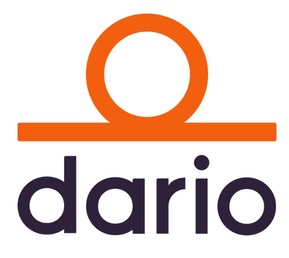 Though it’s busier, and no banks collapsed, the New Reality takes us back once again to 2019, before the champagne days of 2021 and first half 2022. Rock Health’s Q1 2024 summary of US digital health deals hasn’t a bit of froth to it and is headlined “Great (reset) expectations”. But the highlights show a bit of revival after 2023, where there was, in the immortal words of Frank Zappa, “no way to delay that trouble comin’ every day”.
Though it’s busier, and no banks collapsed, the New Reality takes us back once again to 2019, before the champagne days of 2021 and first half 2022. Rock Health’s Q1 2024 summary of US digital health deals hasn’t a bit of froth to it and is headlined “Great (reset) expectations”. But the highlights show a bit of revival after 2023, where there was, in the immortal words of Frank Zappa, “no way to delay that trouble comin’ every day”.
- In Q1 2024, there was $2.7 billion in funding across 133 deals, with an average deal size of $20.6 million. This was a great improvement over Q4 2023’s limp $1.9 billion across 122 deals, the lowest funding quarter since Q3 2019. [TTA 8 Feb]
- 2024’s Q1 was the lowest first quarter by sector funding since 2019, since 2022 and 2023’s Q1’s were the best of their respective years.
- Number of deals are up but the deal size remains small at $20.6 million–no blockbusters. Q1’s 133 deals beat out each of the past six quarters, but just edged out Q1 2023’s 132.
- Unlabeled rounds grew from 2023: 48% to year 2023’s 44% of the total. Labeled rounds, predicted to make a comeback in 2024, haven’t come back quite yet.
- Deal structures are getting very, very creative. DecisionRx gave Carlyle Group the option to convert a $100 million debt facility to 25% of outstanding shares, which is trading a lot of equity in the company for not a lot of money. Transcarent has a $125 million Series D that tags a sweetener of 2.5x to funders should the company M&A or IPO. This Editor noted the structure of Dario Health’s February acquisition of Twill as “a dizzying chronicle of funding legerdemain that this Editor hasn’t seen since her airline days”.
It wasn’t a surprise that AI was ‘the thing this year’ in attracting funding–almost as much as financial success being redefined as bottom-line profitability, conservative (what we used to call sandbagged) forecasts, and an emphasis on outcome data.
- Companies that claimed AI in their products or services accounted for 45 deals with $1.1 billion of Q1’s funding, or 40%, versus 2023’s 33% of funding.
Rock Health’s analysis made much of outcomes data and that showing efficacy is now more important--and at earlier stages. It serves to differentiate players in the market (something we marketers have known about forever). For funders it can illuminate the value for their investment. And funders will scrutinize x 3.
- Companies, unable to satisfy public shareholders so easily pleased in the SPAC and IPO palmy days of 2021-23, are leaving, not entering, public markets. Veradigm had to delist this year because of Nasdaq financial reporting problems from bad software despite being financially healthy–and acquiring ScienceIO. Rock Health does not include the recent pending delistings of Clover Health and Amwell. Both NextGen Healthcare and SOC Telemed went private last year. Others were acquired: Science 37, BenefitFocus, Castlight, Signify Health, and Tabula Rasa. Four went out of business: Babylon Health (Ch. 7 US, administration in UK), Pear Therapeutics (Ch. 11, IP sold), UPHealth (Ch. 11), and Better Therapeutics (closure).
- Rock Health sees this as an important ‘recalibration’ for valuations, particularly for startups. “Startup valuations stem from expected investor returns at exit, and funders often use comps from publicly-traded players’ market capitalizations to triangulate company potential.”
Rock Health concludes that the expectations around exits have shifted drastically. The predicted return of M&A hasn’t yet. Their latest projection is that companies “may embark on dual-track processes, pursuing IPO and M&A exit pathways concurrently to keep options open”. For now, for digital health, it’s the end of growth-minded forecasting and the start of reporting their financials conservatively, with plenty of outcomes attached–as if they were being publicly traded and had quarterly earnings calls with analysts and journalists on their tail.
Editor’s note: Notably missing from their summary was the usual charts of raises by series stage (A, B, etc.) and digital health sector (mental health, cardiac, etc.).























Most Recent Comments